
About This Quiz
The history of French pastry goes back a heck of a long time. As far back as the 1200s they were making desserts and pastries. Puff pastry was created in 1540. Whipped cream came from France in 1660. Macarons date back to 1793. Ganache was invented in 1850. It's safe to say almost everything you love about dessert today owes the French a great debt. How everyone in that country isn't just terribly unhealthy and sticky with sugar fingers all day every day is a mystery that no one will ever be able to solve. The French just make amazing desserts.
People train their whole lives to master the fine art of French dessert making and pastries. A pastry chef, or pâtissier, can go to school and then work in a kitchen for years to perfect the craft of pastry-making. It may just be a donut to you, but it can be serious business to the French. And why not? Deliciousness is no easy task. If you feel like you know a little bit about French pastries, whether that's making them or just eating them, why not try your hand at identifying some? We bet you can't get them all. Take the quiz and see!
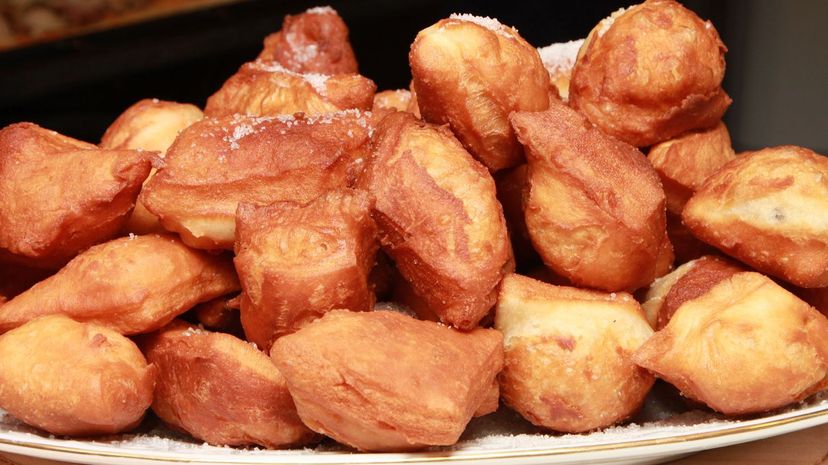
A beignet is sort of kind of a French donut but closer to a fritter if we're being honest. Essentially it's just fried dough and it's been around since the days of Ancient Rome. If you want to try a good one and can't make it to Paris, there's always New Orleans.
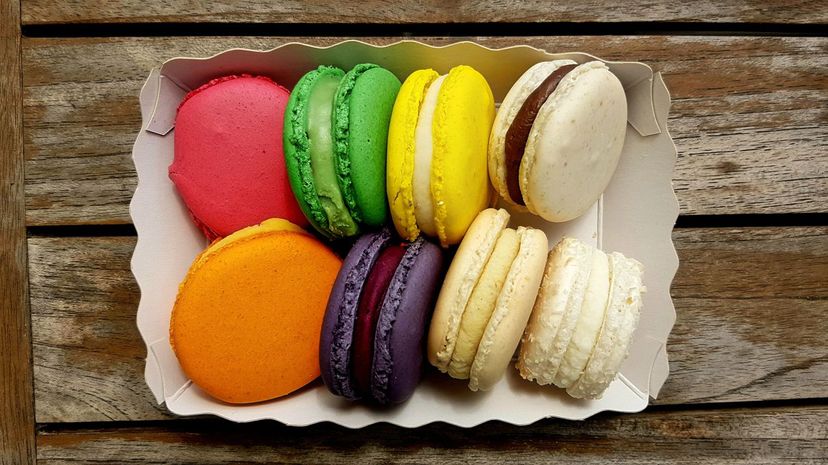
Macarons are essentially meringue cookies with a filling between them. They're not to be confused with a coconut macaroon which is basically a coconut cookie, but the two foods actually started as the same thing way back in the day. One recipe replaced almond paste with coconut was all.
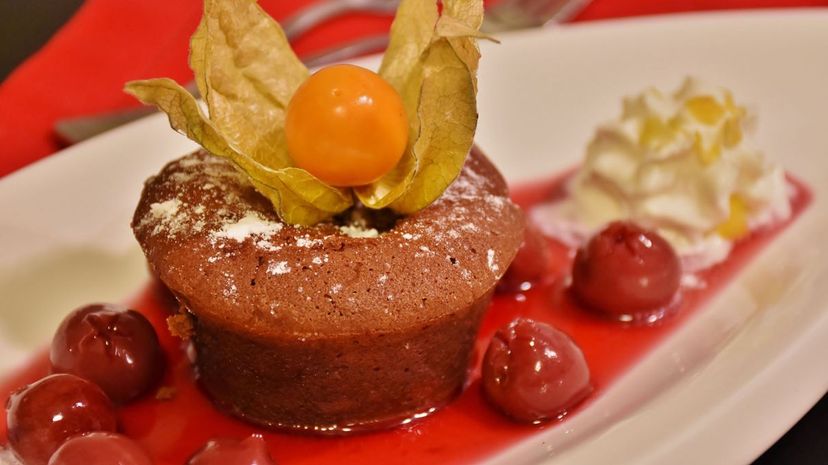
A rum baba, also called a baba au rhum, is generally a small cake that you thoroughly soak in syrup that's made from rum, hence the clever name. You can make larger versions of the cake but usually, they're meant to be individual desserts so you can enjoy the rum all for yourself.
Advertisement
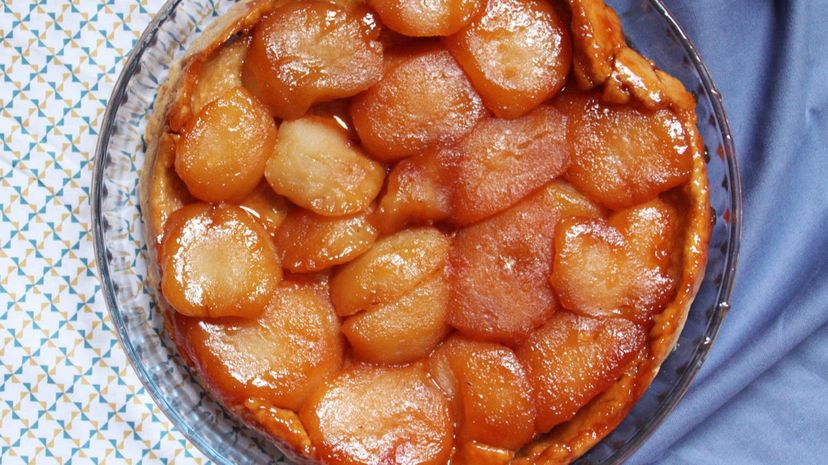
A tarte tatin is a kind of upside-down cake essentially, and while you usually make it with apples you could probably use any kind of fruit that you can caramelize in a pan like pears, peaches, pineapple or whatever.

The Jesuite gets its name from the triangular hat worn by Jesuits, traditionally. It's a flaky pastry filled with frangipane cream and then topped with almonds and powdered sugar. All things being equal, it doesn't look much like a hat.
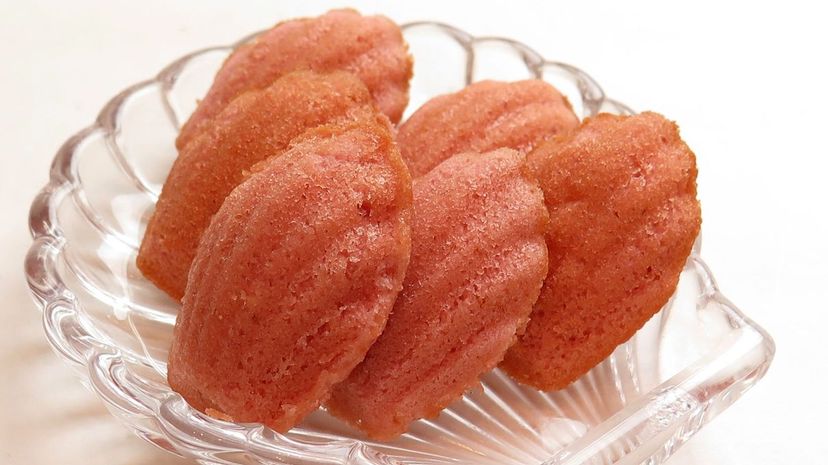
Madeleines look like cookies but are small sponge cakes from the Lorraine region of France. They're traditionally made in a shell-shaped pan which gives them their distinctive shape, although technically you could make them in any shape at all.
Advertisement
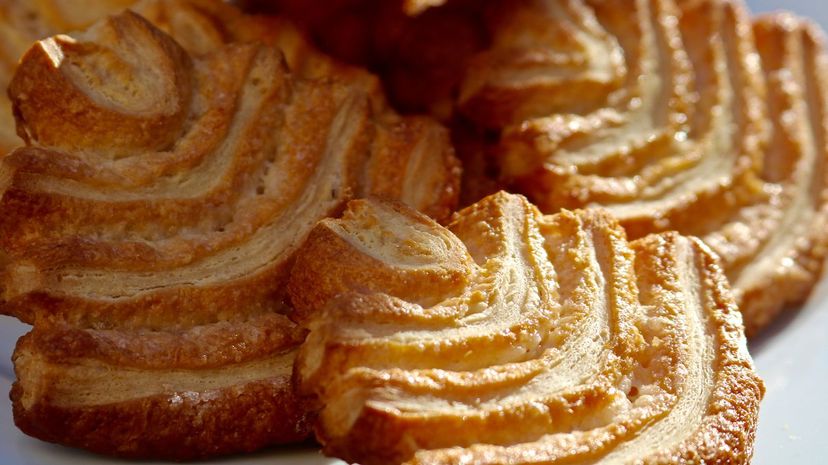
Palmier, also known as a pig's ear, elephant's ear or palm tree, is oddly often shaped like a butterfly. Why not call it that? Who knows. It's made in a very similar way to a croissant, only the dough has no yeast so it doesn't rise.
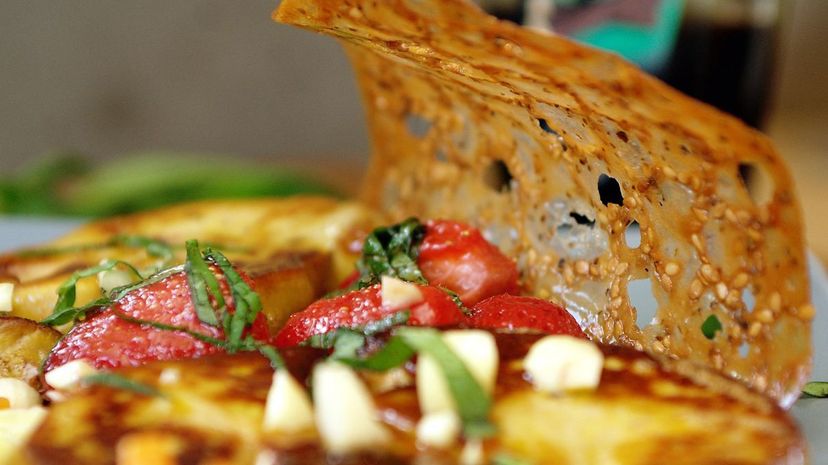
A tuile is basically a crispy cookie or wafer that's very thin and often used as a kind of garnish. The word itself means tile because they're shaped to look like a kind of French roof tile.
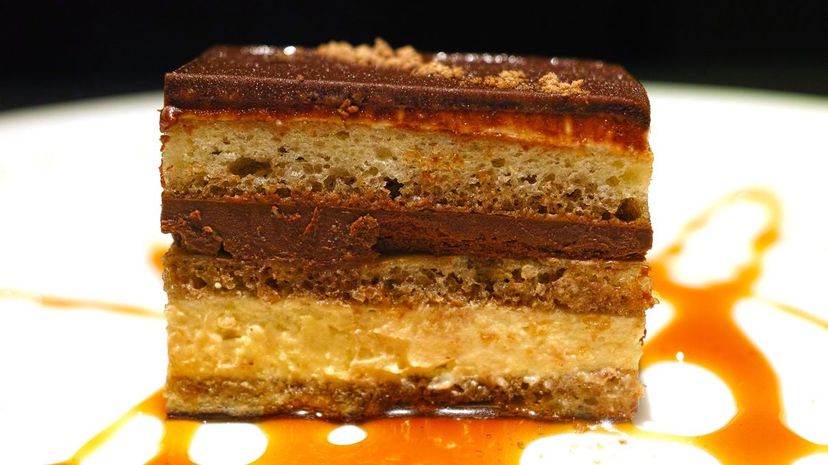
The opera cake is a dessert made with almond sponge cake soaked in coffee syrup layered with ganache and buttercream. It also has some mysterious origins and may date back to 1960, 1955 or the 1800s depending on who you ask.
Advertisement
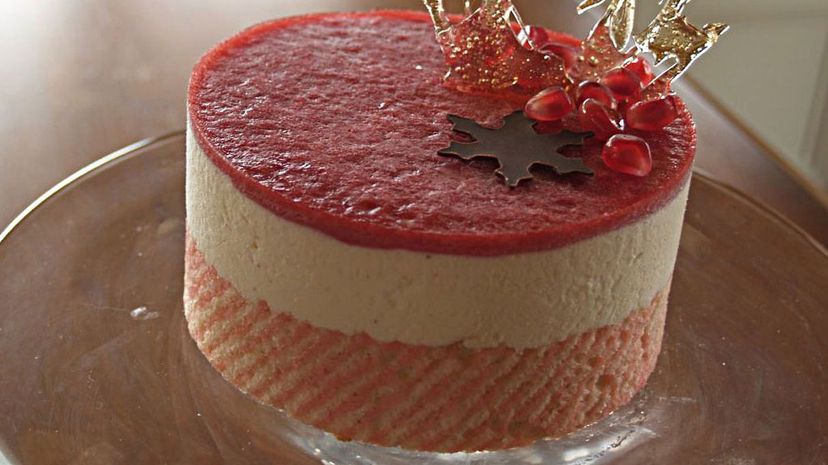
The dacquoise cake is mostly made of meringue layered with buttercream, whipped cream and a cookie base. You can put a little fruit glaze on top of it as well because how is that ever a bad idea?
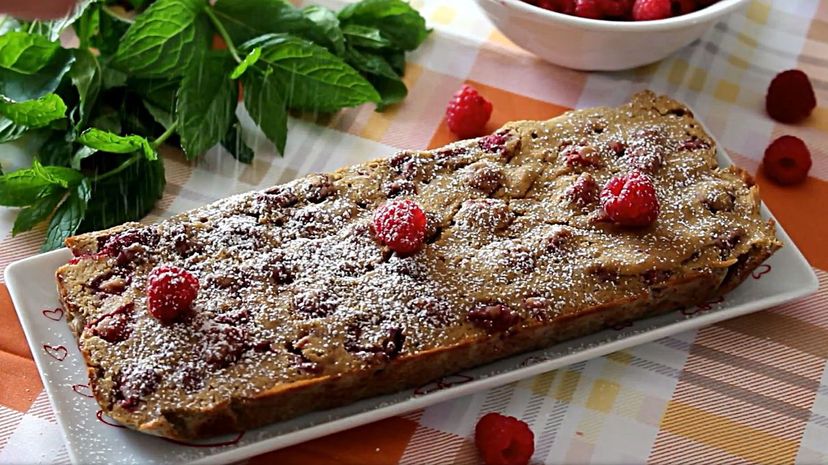
Flaugnarde is a dessert made from fruit that is baked in a pan with a flan batter covering it. It can be made with fruit like apples, peaches, pears or whatever and looks like a big ol' pancake full of fruit when it's done.

Tarte conversation, which literally means "conversation tart," dates back tot he 18th century when it was created to celebrate the publication of a book called "Les Conversations d'Emile." Must have been a heck of a book.
Advertisement

The croquembouche starts as a fairly simple dessert; just choux pastry puffs. But to make it into a proper croquembouche you pile them into a cone and then drizzle the whole thing with threads of caramel. It can also be decorated with sugar or chocolate decorations to up the wow factor a bit as well.
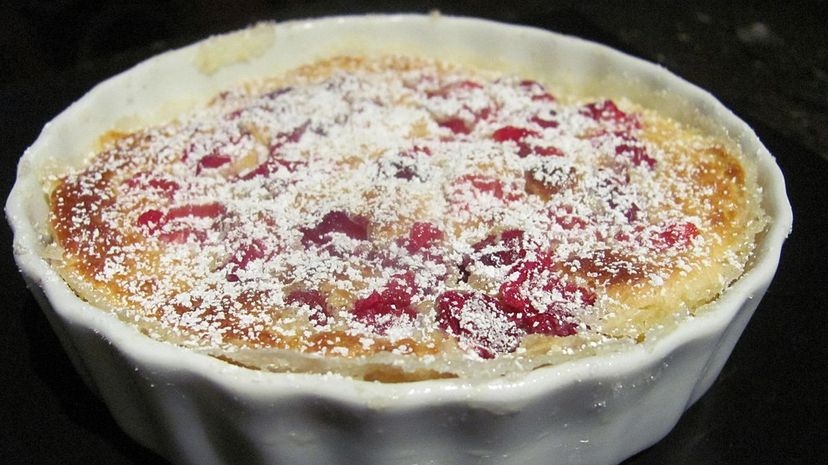
A clafoutis (very similar to a flaugnarde) is made by laying down your black cherries in a pan and then covering it with a flan batter. Apparently, if you want to be ultra-traditional you'll include the cherry pits which slightly alter the flavor and also contain trace amounts of cyanide. Yum!

Darioles get their name from the mold in which they're baked which is a small cylinder that makes for an overall long-looking cake or pie when it's done. Savory ones can be filled with meat, cheese or veggies while dessert ones may have custard or almond cream
Advertisement
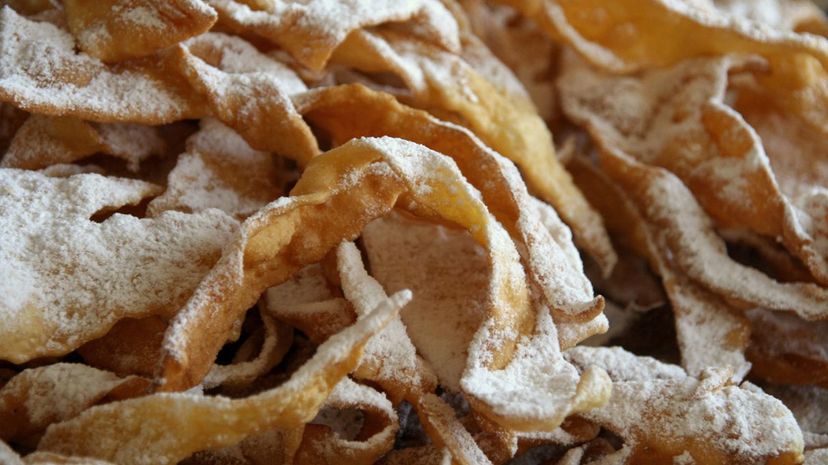
Angel wings have found their way into cuisine all around the world and date back to Ancient Rome. Often they're a treat reserved for just before Lent. They're very simple and are just thin twists of dough fried and dusted in powdered sugar.
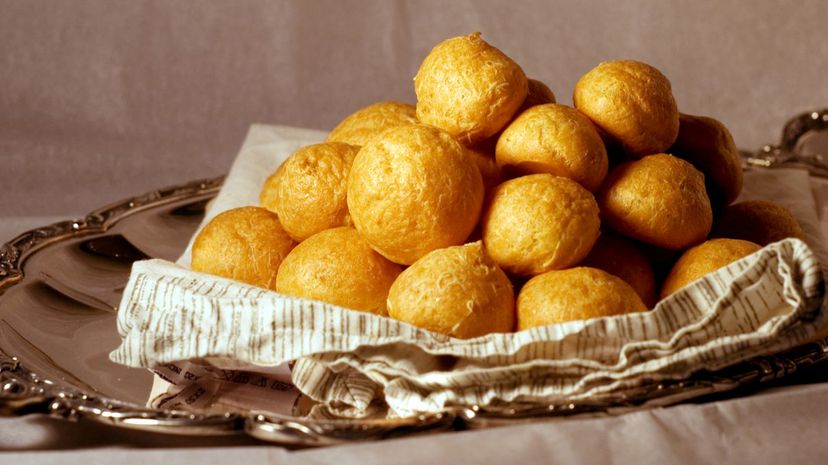
A gougère is a tiny little choux pastry puff which can be the start of a dessert in many cases, but in this one it's filled with cheese, making it a savory pastry. Sometimes you can up the ante by filling them with mushrooms or sausage as well.
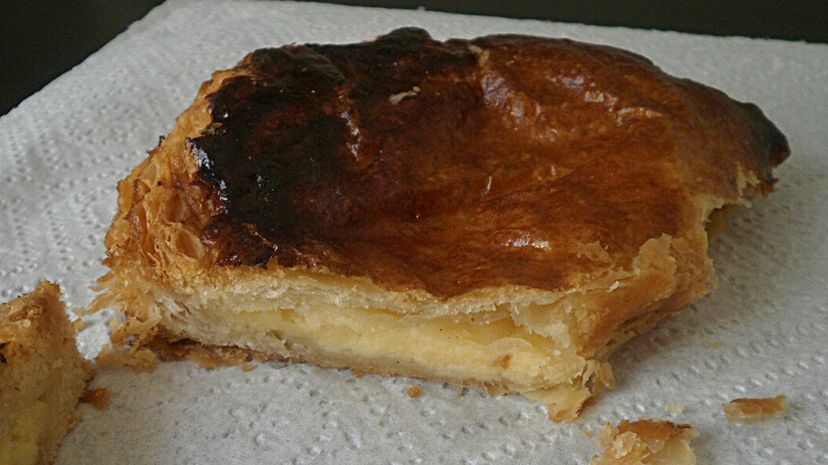
Bichon au citron is a type of puff pastry that would arguably be a turnover if you filled it with some kind of jam. However, since it's filled with lemon curd, it's a bichon au citron. Does it have anything to do with bichon dogs? That's a good question.
Advertisement
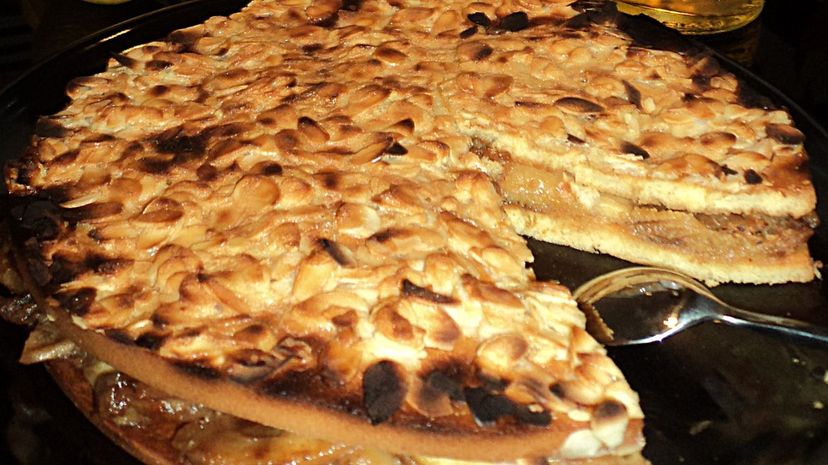
A vitréais cake comes from the town of Vitré in Brittany. The town only has a population of about 18,000, so good for them for creating what would go on to become a world-famous dessert.
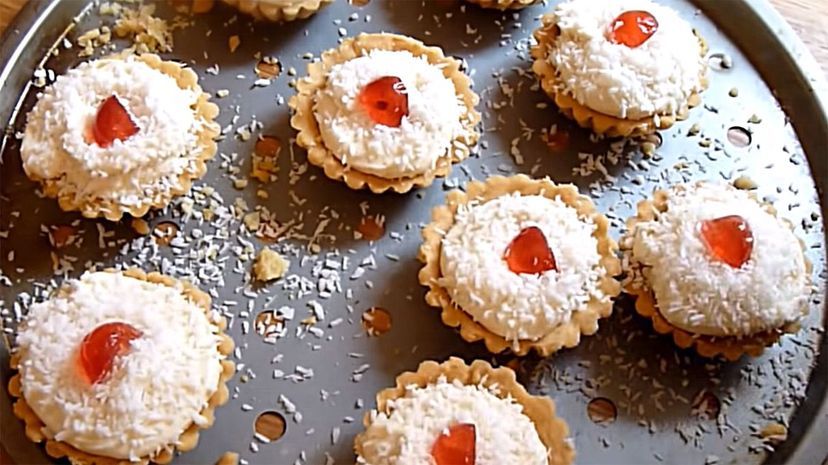
The puits d'amour cake is generally a small cake that is filled with something like jam or vanilla pastry cream. The recipe dates back to the 1700s, and at the time there were two versions. One was a large cake meant to be shared and one was a small version meant for one person.
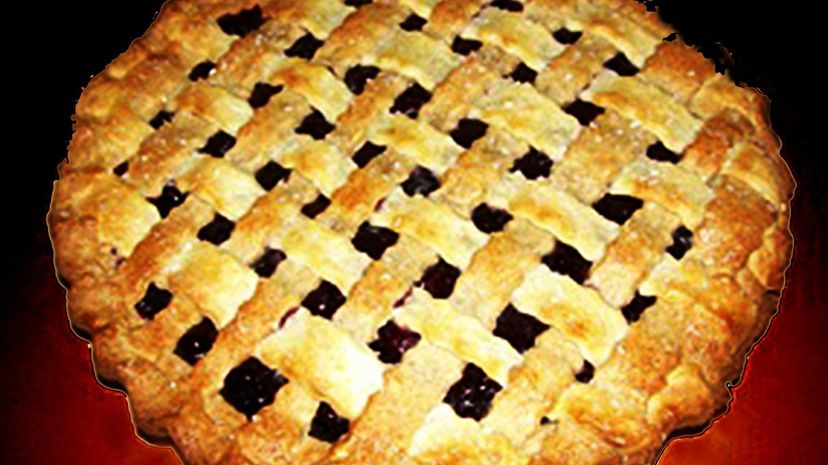
Clearly from the Alps, the tarte des Alpes is a jam-filled pie covered with a lattice pattern of pastry on top. It was traditionally made as a winter dessert with preserved fruit from the summer months included as a filling.
Advertisement

The name petit four actually means "small oven" which is kind of weird, right? But not really! Back before gas ovens were a thing and the French were baking in big brick ovens, petit fours were cooked during the cooling process because it took the ovens so long to cool down between uses.
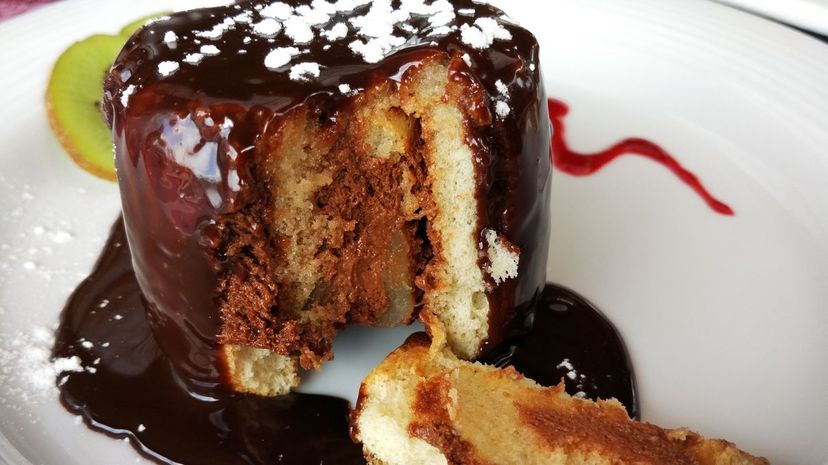
The original recipe for a Charlotte doesn't sound super delicious. You'd dip stale bread in butter then line the pan with it and fill it with fruit puree or custard. There are dozens of other ways to make one, though, so stale bread isn't necessary.
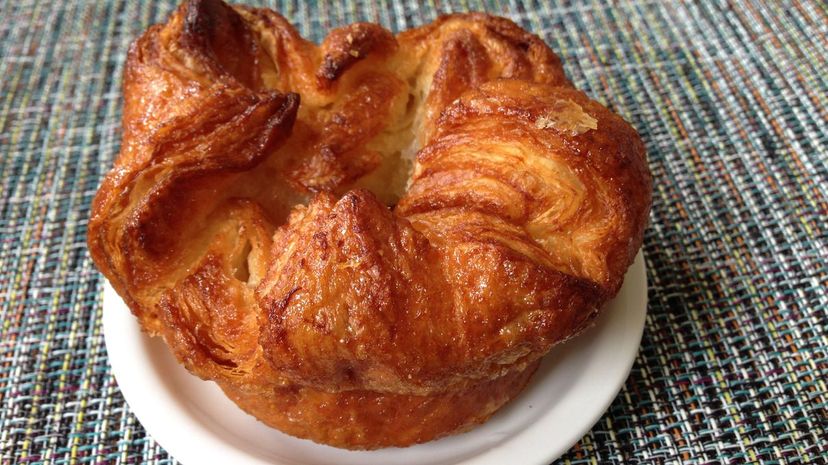
A Kouign Amann is a dessert that was called the "fattiest pastry in all of Europe" by the New York Times. For two cups of flour, you'll need about 11 tablespoons of butter which is, you know, a lot.
Advertisement
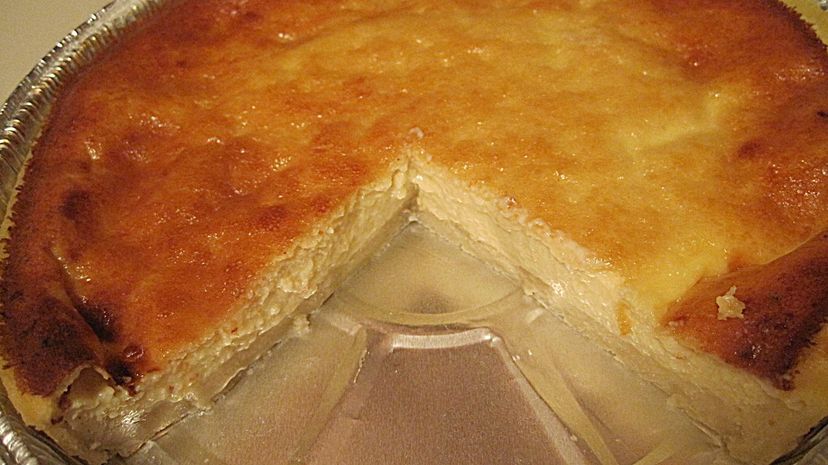
Custard tarts, or flans pâtissier as they're known in France, are popular in numerous countries. The French versions are typically a little bigger around than a British one, but also thinner as well.
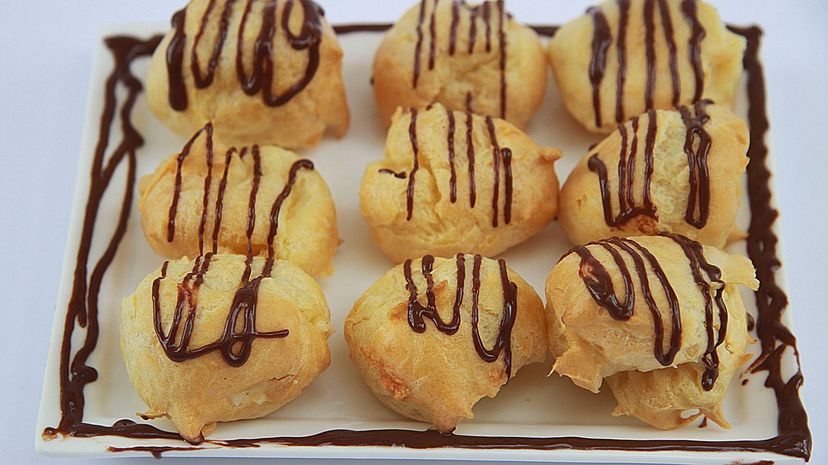
Profiteroles are just little choux pastry balls filled with whipped cream, pastry cream or even ice cream if you're feeling fancy. If you want to go super nutty you can make a savory profiterole filled with meat or cheese.

The Bûche de Noël, or Yule log, is a traditional Christmas dessert designed to look like a literal log for festive reasons. It's a sponge cake and the frosting is often chocolate. It's made as a roulade which means the cake is rolled so inside there can be either frosting or jam filling as well.
Advertisement

There's a custard center in a canelé and the outside is caramelized to make it a little crunchy because who doesn't like a crunchy, caramelized crust? They come from the Bordeaux region of France and pair nicely with wine.
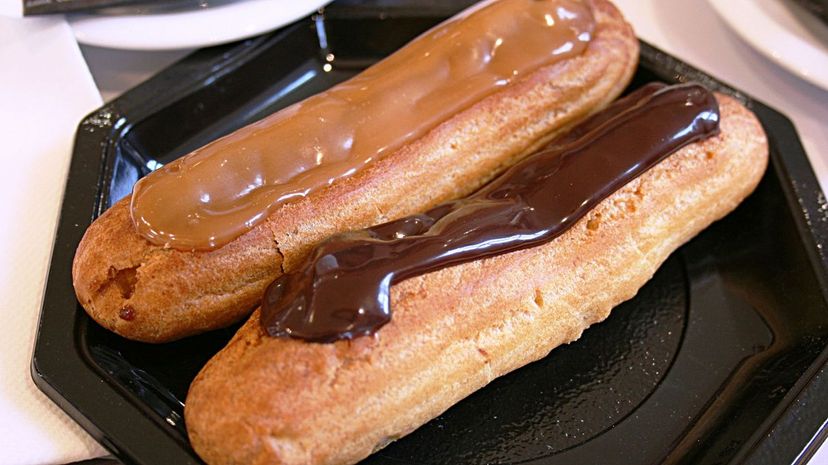
Eclairs may be the most famous French pastry in the world, or at least some of the most popular. They're choux paste piped full of cream and topped with chocolate, which is kind of perfect when you think about it.
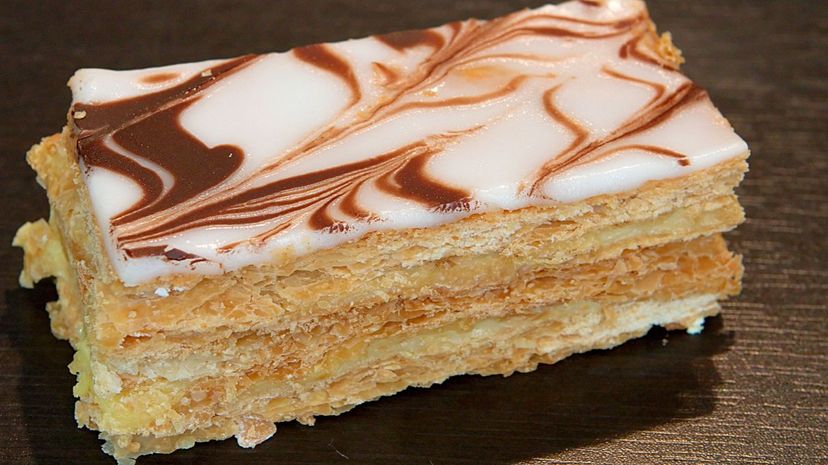
The mille-feuille can be found in cookbooks as far back as the 16th century though its origins are unknown. It's made with puff pastry layered with pastry cream. It's usually about 5 layers, so the "thousand" part in the name is a bit of an exaggeration although the puff pastry can make it seem that way.
Advertisement
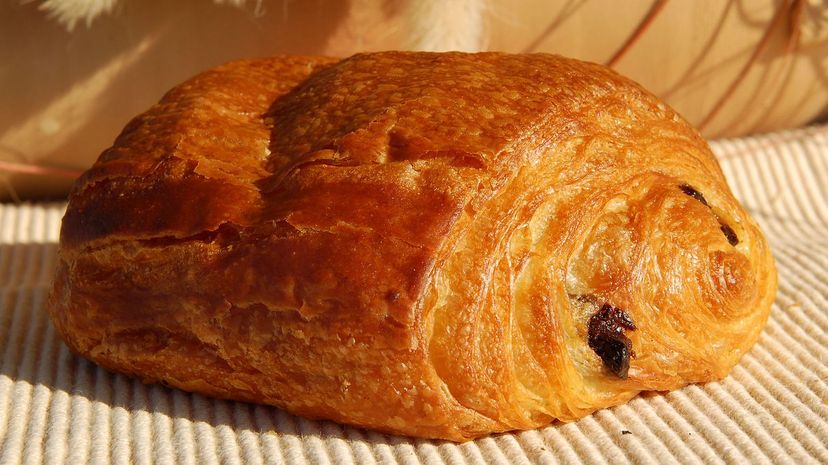
Pain au chocolat or "chocolate bread" in English is essentially made the same way you make a croissant, but it has some dark chocolate baked into the center of it.

Paris-Brest was created to commemorate the Paris-Brest-Paris bike race, because what says physical fitness and bike racing quite like a hazelnut-cream filled pastry dessert?
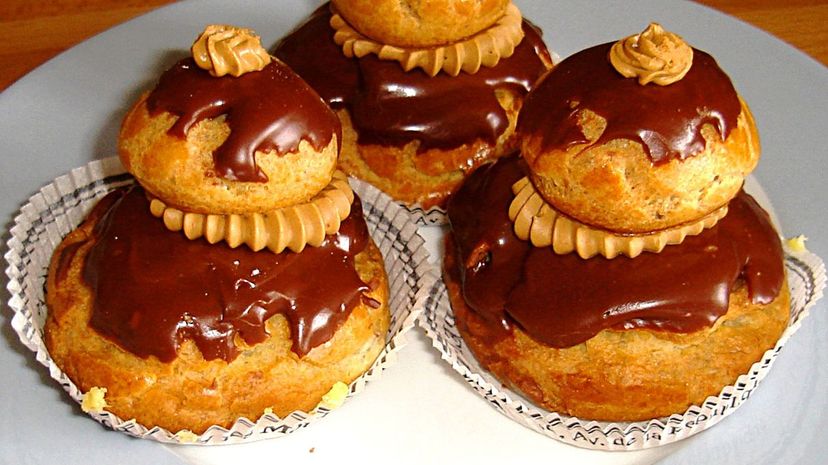
A religieuse is made of choux pastry cases piled on top of each other to look like the pope's mitre. The inside should be filled with custard and then you can decorate the outside of the dessert with chocolate or buttercream.
Advertisement
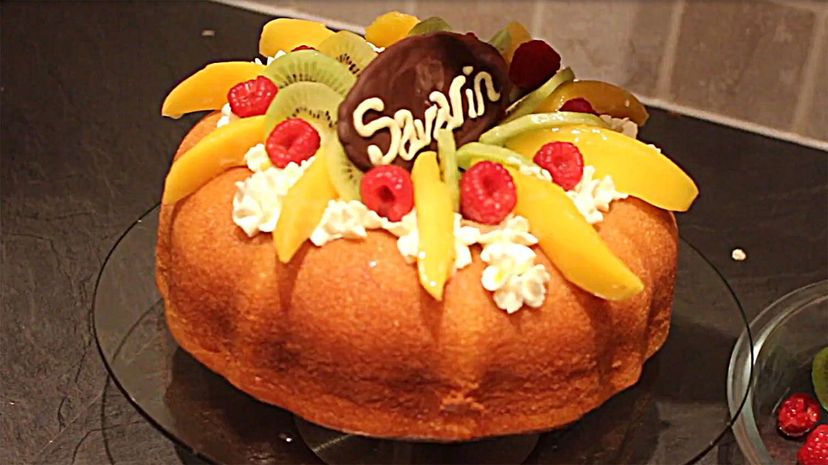
A Savarin gets its name from writer Brillat-Savarin back in 1845. Savarin did not name it himself; rather it was named for him by a pair of pastry chef brothers named the Juliens. If you soak it in rum it becomes a rum baba.
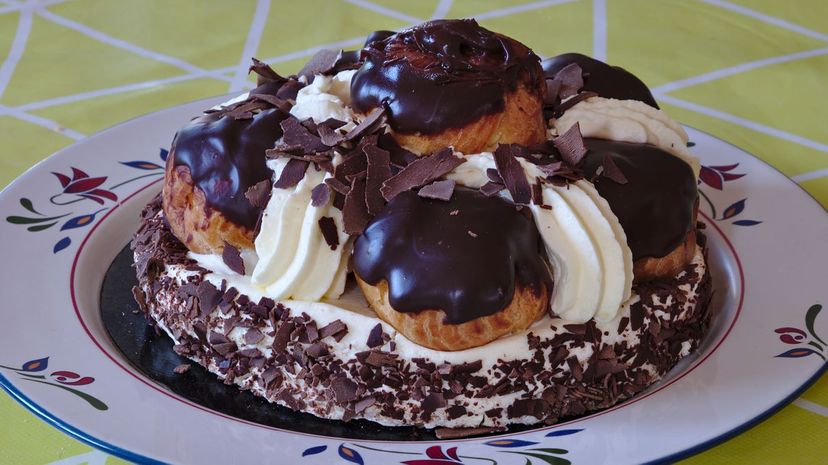
Named for Saint Honore, the bishop of Amiens and the patron saint of bakers, the St. Honore Cake is puff pastry with choux paste on top and cream puffs attached to it. It's usually decorated with whipped cream using its very own St.Honore piping tip. Fancy!
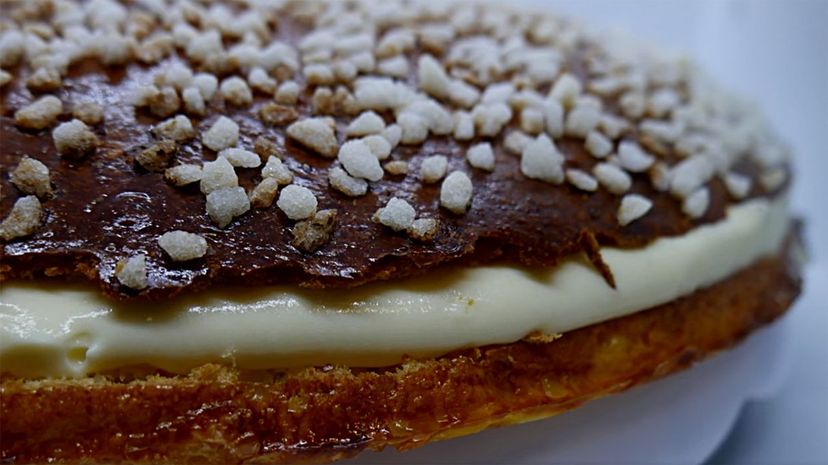
La Tarte de Saint-Tropez or the tarte tropézienne is a filled brioche that was made in 1955 by a pastry chef from Saint-Tropez. Word is Bardot was filming the movie "And God Created Woman" at the time when she named it.
Advertisement
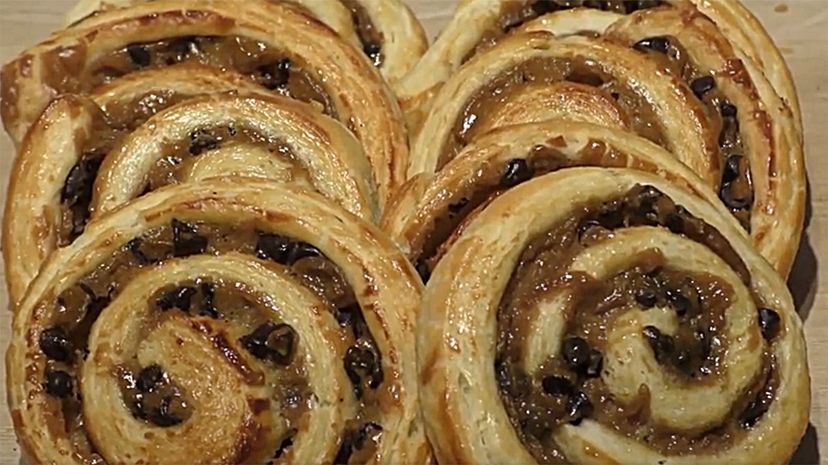
Viennoiserie is a catchall name for a family of baked goods basically, which includes things like croissants and turnovers. It's made with a yeast dough that you add cream and sugar and other ingredients to in order to fancy it up.
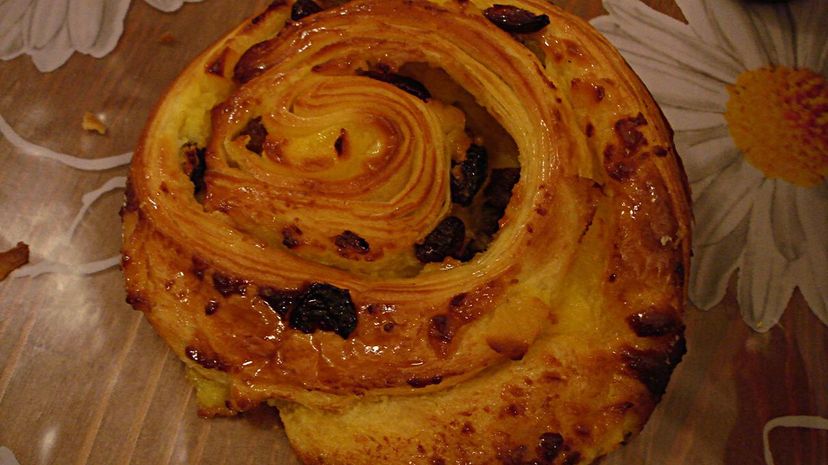
Pain aux raisin is a breakfast pastry popular in France that is basically a croissant that was made with raisins. The type of dough it's made from, pastry in some cases or perhaps brioche in others, often depends on where it's being made.
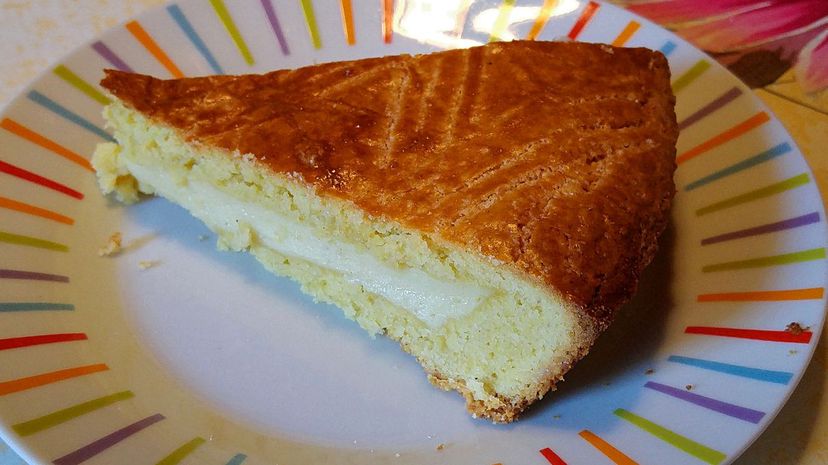
From the Basque region of France, a Gâteau Basque or Basque Cake can have a variety of fillings. If the filling is pastry cream, then there's traditionally a crosshatch design carved into the top. If it's black cherry jam then a Basque cross will be on top and so on.
Advertisement
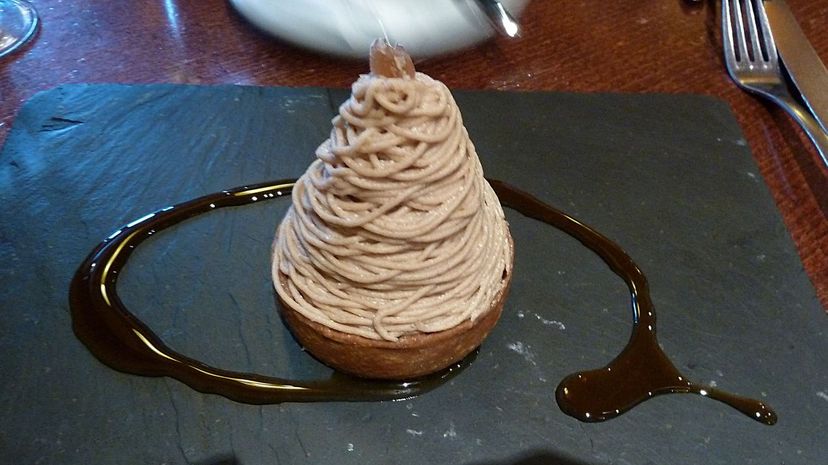
The mont blanc is made with chestnut cream and meringue and looks like a tiny little bird's nest with a candied nut nestled into the top of it if it's made properly. Dust it with a little powdered sugar to get that "blanc" part down.